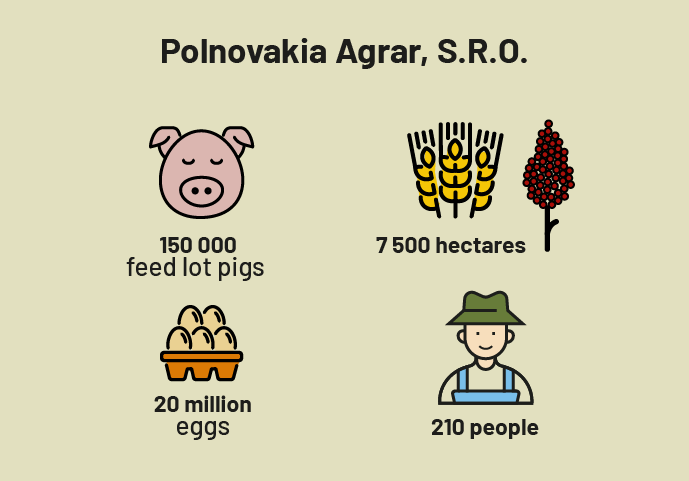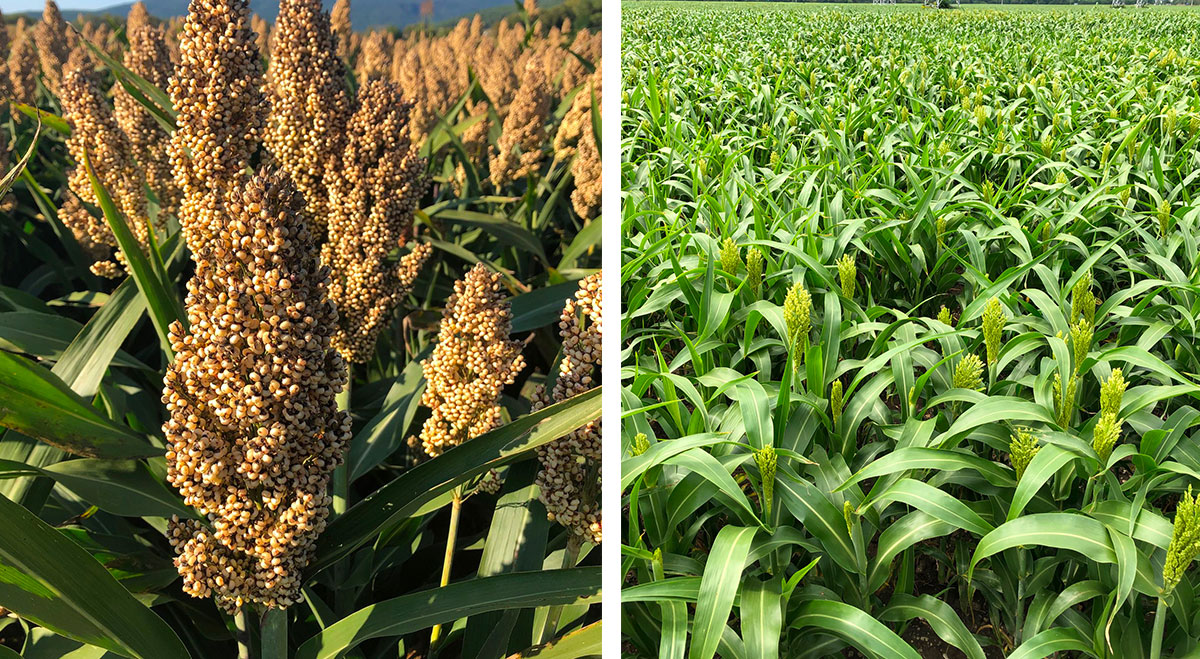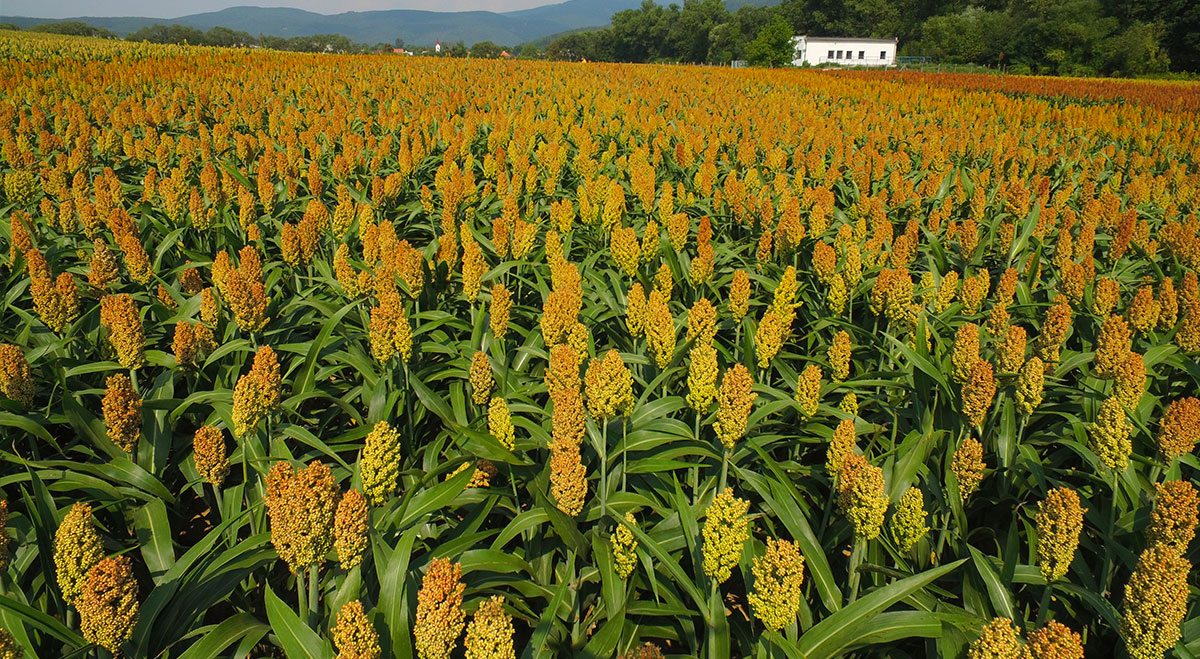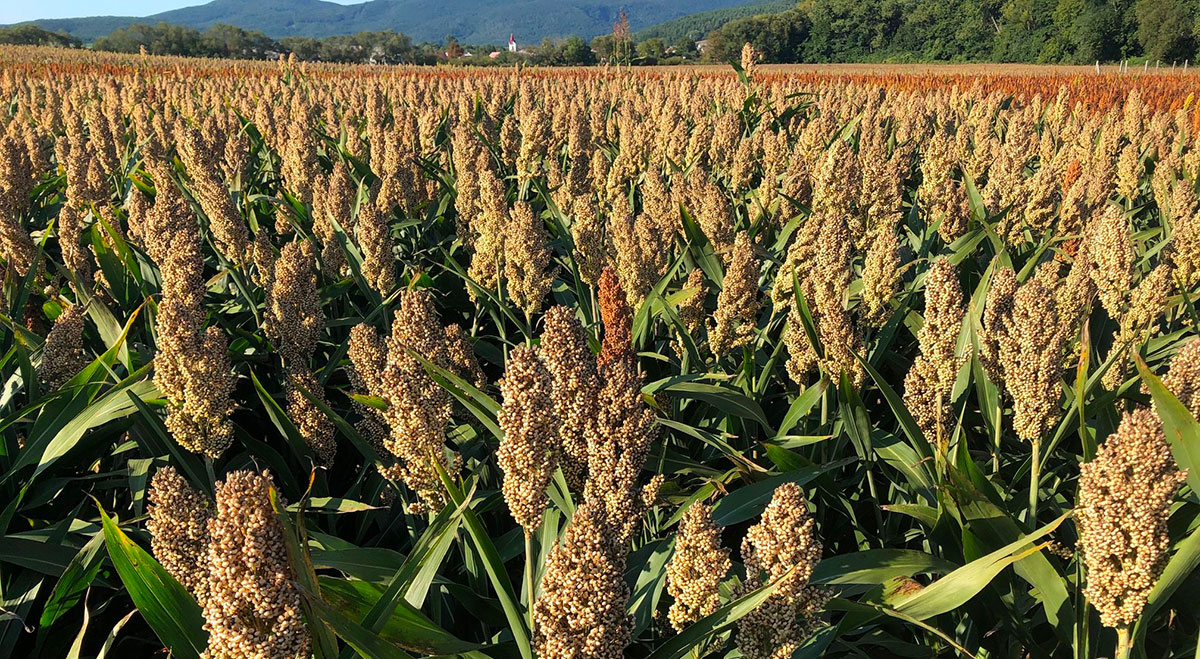Sorghum in Slovakia: a Promising Future


Created in 2003, Polnovakia Agrar, S.R.O. comprises production units located throughout Slovakia and specialises in swine growing, crops, egg production, and feed. Ever since its integration into the company’s rotations in 2018, sorghum has had an important place among the latter’s activities. Farmer Peter Jakub was kind enough to answer our questions.
With 150 000 feed lot pigs per year, swine production is the main pillar of the company, which also produces 20 million eggs and farms 7500 hectares of land every year. Polnovakia Agrar, S.R.O. currently employs about 210 people. Since 2018, it has gradually included sorghum in its rotations.

Sorghum ID – Why did you choose to include grain sorghum in your farms?
Peter Jakub – We were looking for a crop that could meet two major criteria: drought resistance and the ability to be integrated into our livestock feed production. We also wanted to lengthen our rotations and diversify our crops. Sorghum also provides several other benefits: higher protein content and less toxins compared to other grains; better insect and disease tolerance, and lower production and drying costs. Sorghum also allows us to better organize our work throughout the year, since we can plant later than we do in the case of sunflowers or other cereals, and we can harvest earlier.
Before embarking on sorghum, we would have only been able to conjecture about the results, since at the time, no one around here would have been able to explain to us what the advantages/disadvantages of sorghum were.
“Today, sorghum is a key crop in our farm, having gone from 10 hectares, in 2018 to 600 hectares, in 2020.”
Sorghum ID – To be more specific, how do you work with sorghum now?
Peter Jakub – We have chosen a treated variety – Concep® III1 – and we grow grain sorghum on most of our land. Our planting density is about 275 000 kernels per hectare, with a row distance of about 30 centimeters, but we are moving towards 45 centimeters.
In Slovakia, we start planting in the first fifteen days of May and we generally harvest in September. Our harvests mostly consist in dry sorghum; we resort to drying down to 18-19 percent in rainy years. Average yields vary among our production units and depend on weather and soil conditions, but we generally get six to eight tons per hectare, with some of our best yields reaching 9,5 tons per hectare at 14 % moisture. We produce an overall 3000 to 4000 tons of sorghum per year, all of which we use to produce our own feed.
Sorghum is a key crop in our company, today, having gone from 10 hectares in 2018 to 200 hectares in 2019 and on to a stable 600 hectares in 2020.
Sorghum ID – How do you use sorghum in your pig farms?
Peter Jakub – We use sorghum in our sows’ mixed feeds (about 3 percent) and for our feed lot pigs (15 to 20 percent). Its use and its inclusion rates in the feed mixes are established by our animal nutritionists, who develop the formulas based on both the quality and quantity of the raw product and on the needs of our livestock.
Sorghum ID – In your opinion, what is the future of sorghum in Slovakia?
Peter Jakub – I think sorghum holds a promising future in Slovakia. The severe drought that hit our country this year and the new European regulation on crop rotations will no doubt cause sorghum production areas to grow. However, there is work to be done around improving communication about sorghum, as few growers have access to clear and practical information about this plant. I myself have been asked several times to talk about sorghum. As to the rest, we need to develop its market, in order to provide farmers with better selling opportunities.
1. Concep® III is a treatment used for grain and feed sorghum seed and is aimed at preventing damages caused by herbicides.















